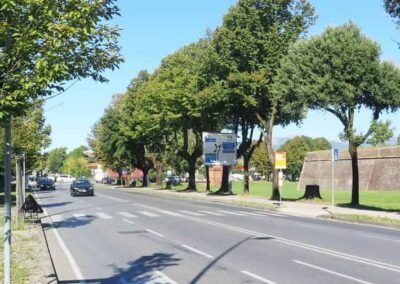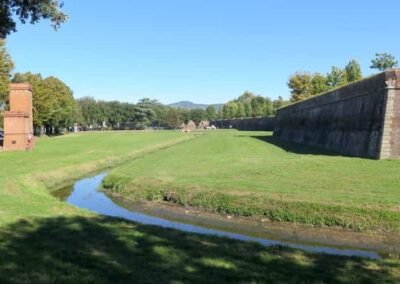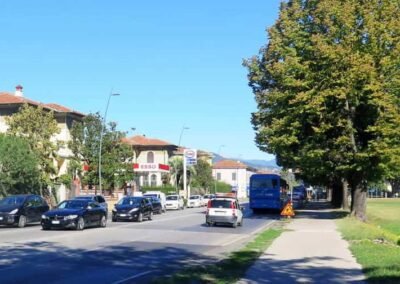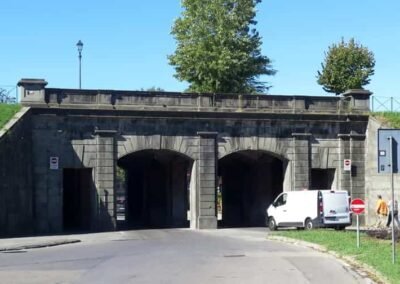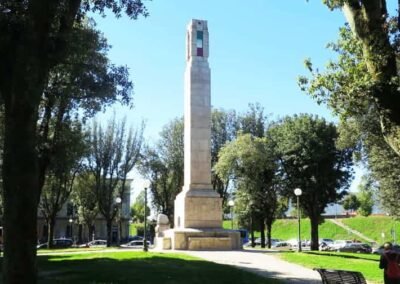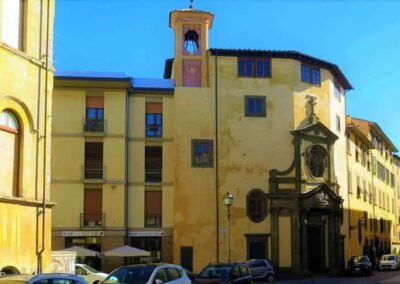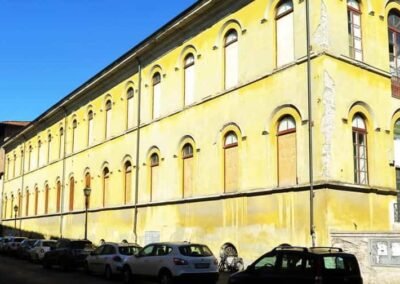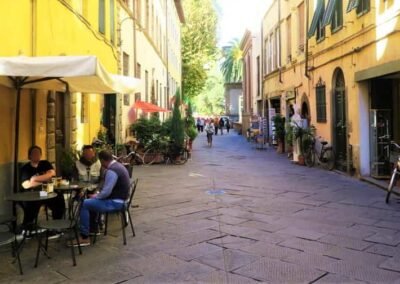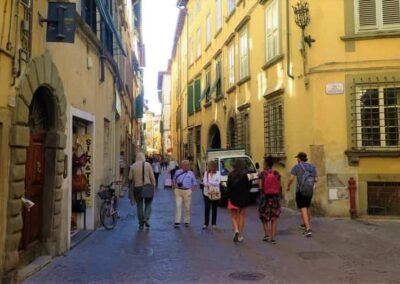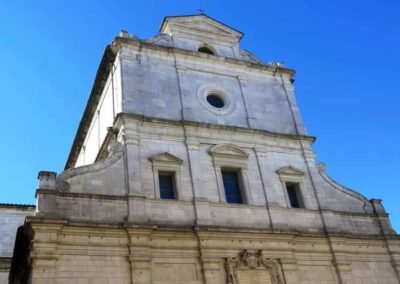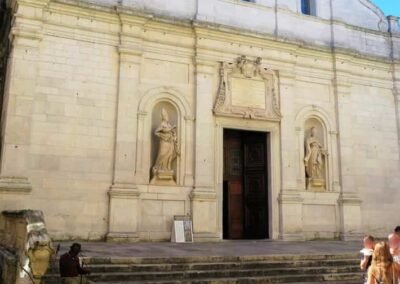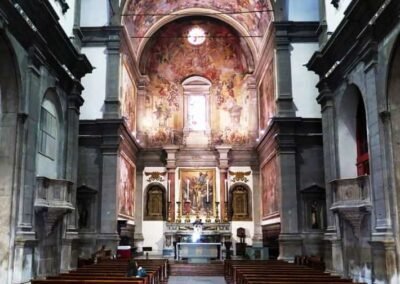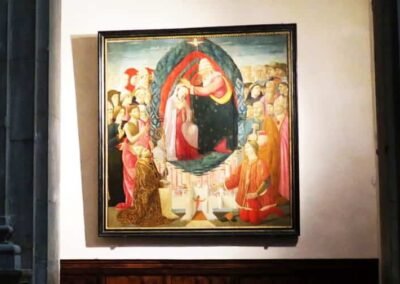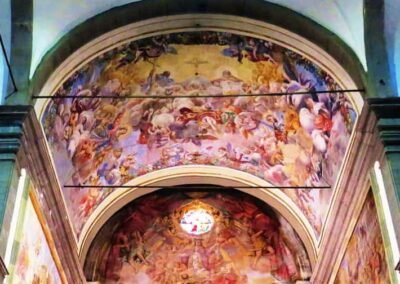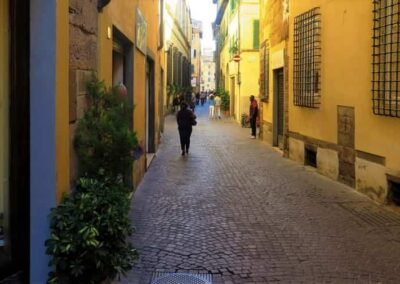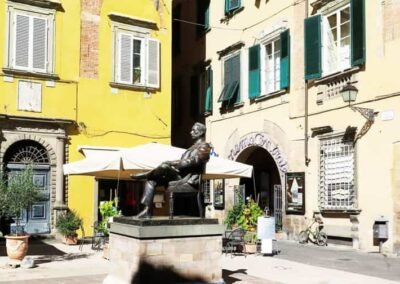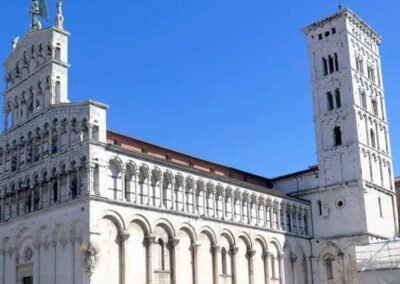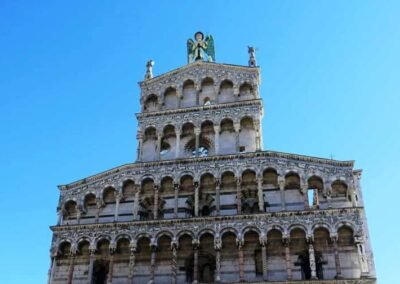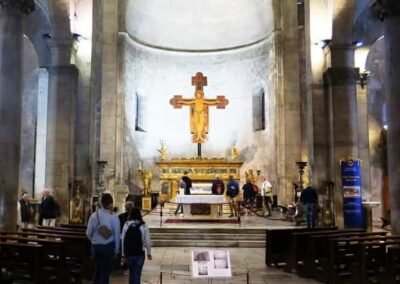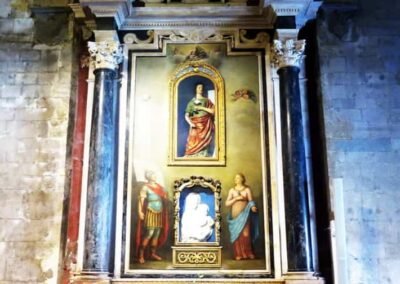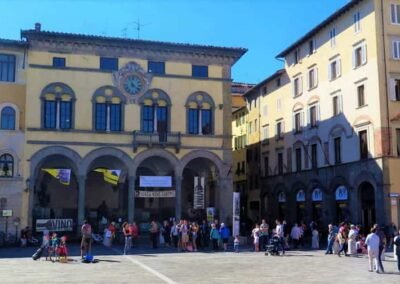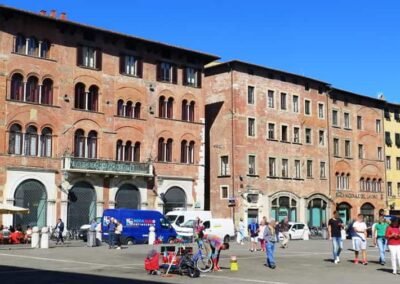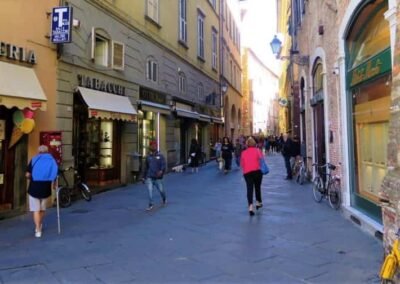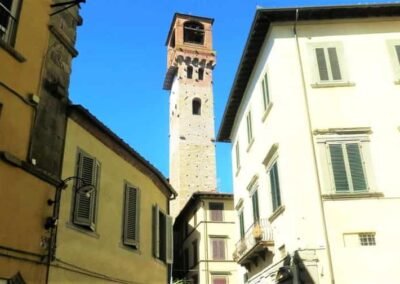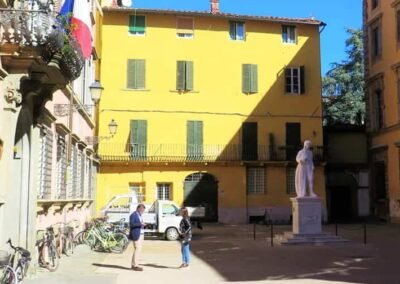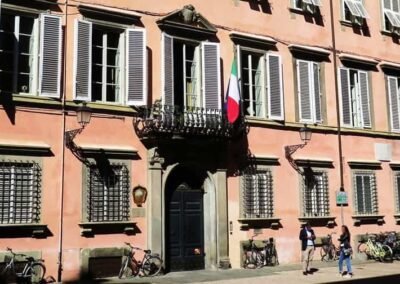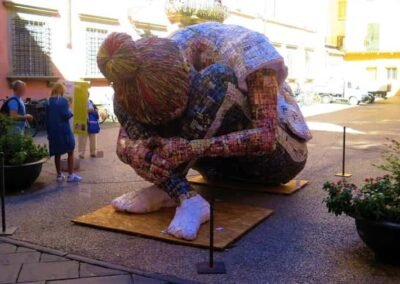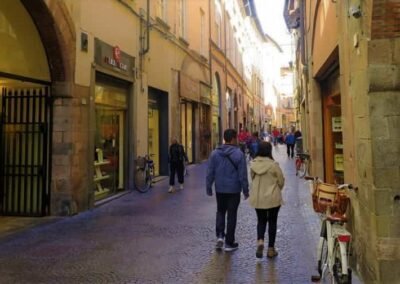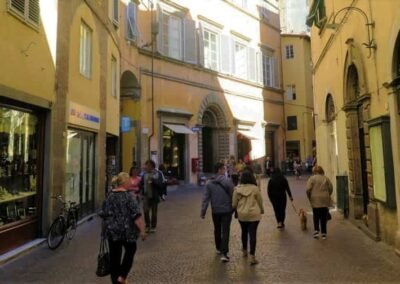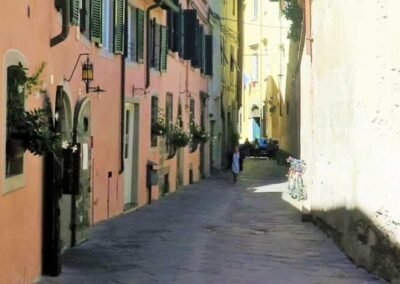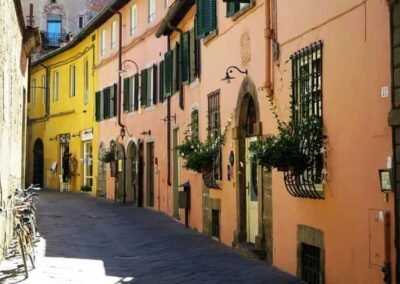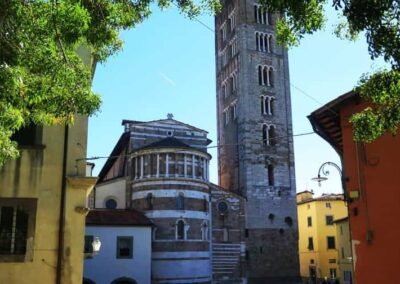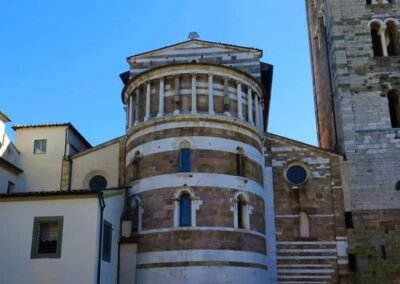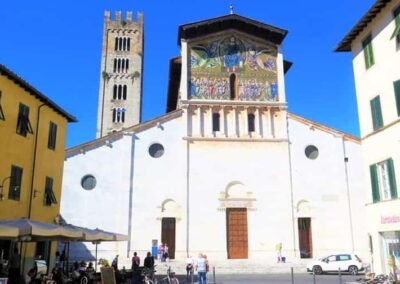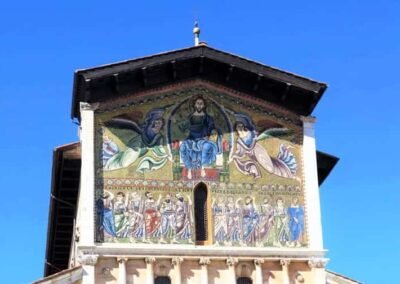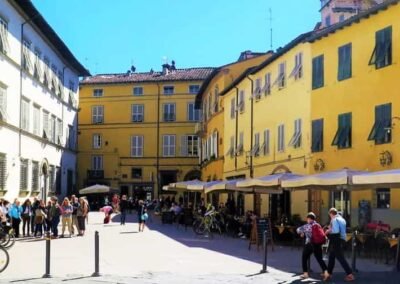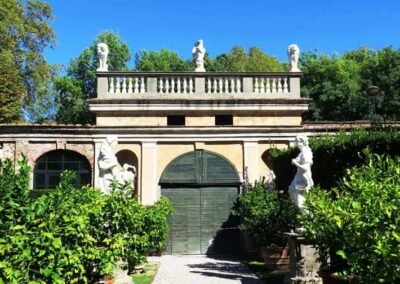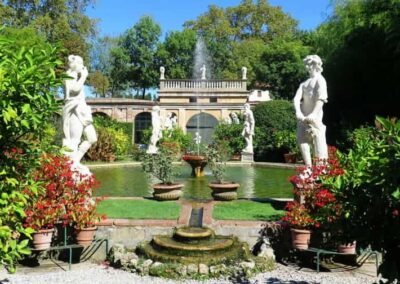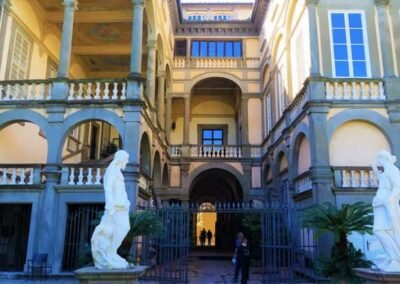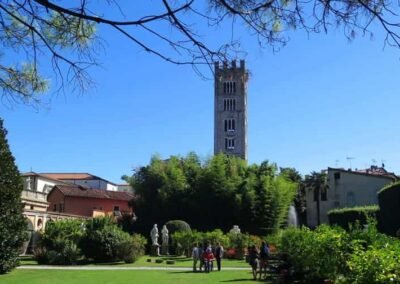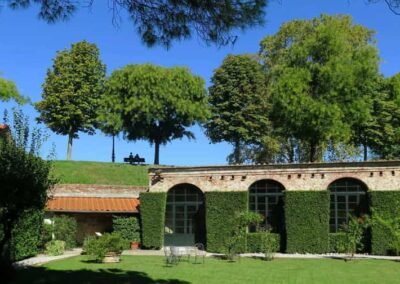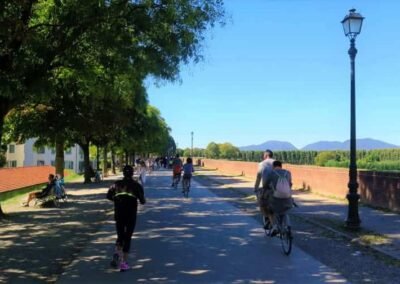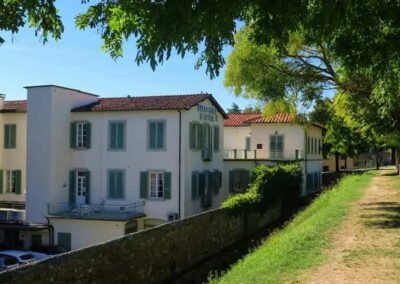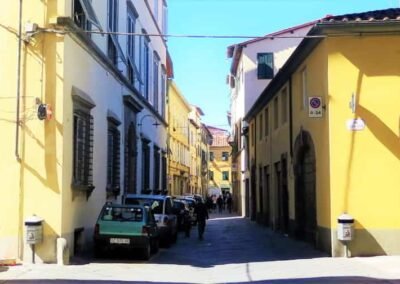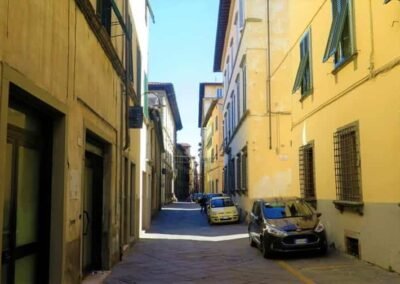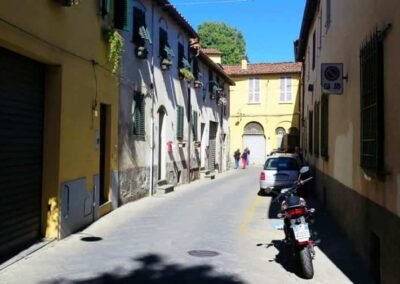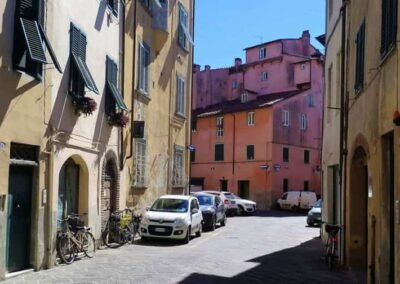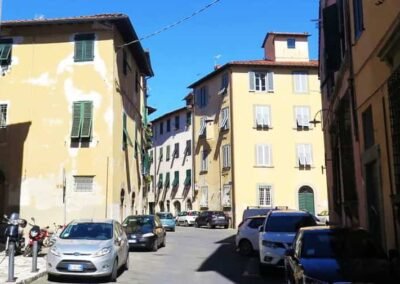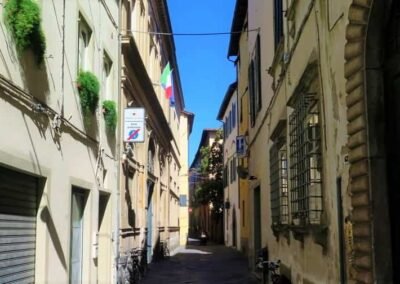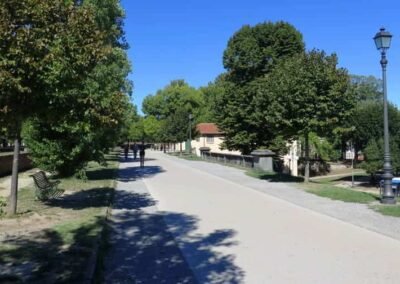HOME
THE REGIONS OF ITALY
PLACES IN ITALY
Italy in Photos
Palazzo Pfanner, Via degli Asili, 55100 Lucca, Italy (September 2018)
Lucca
Located in the Tuscany region of Italy, Lucca is a charming and historically rich city known for its well-preserved medieval architecture, picturesque landscapes, and vibrant cultural scene. Surrounded by a ring of ancient city walls, Lucca offers a unique glimpse into Italy’s past, combined with the lively atmosphere of a modern city. Founded by the Romans in 180 BC, Lucca has a rich historical tapestry that is still evident in its architecture and urban layout. The city’s most distinctive feature is its remarkably intact Renaissance-era city walls, which were built in the 16th century to fortify the city against invaders. Today, these walls serve as a scenic walkway and provide panoramic views of both the city and the surrounding countryside. Lucca’s architectural heritage is one of its most compelling aspects. The Duomo di San Martino is a prime example of the city’s Romanesque architecture. This cathedral, with its striking white and grey striped façade, features intricate carvings and a stunning marble Volto Santo, a wooden crucifix believed to have miraculous powers. The Piazza dell’Anfiteatro is another notable landmark. Built on the site of a Roman amphitheatre, this oval-shaped piazza is surrounded by colourful buildings with arcades and is a lively centre for cafes and shops. Its unique shape and historical significance make it a popular spot for both locals and tourists.
Lucca has a rich cultural and artistic tradition. The city was the birthplace of the famous composer Giacomo Puccini, and his house has been transformed into a museum dedicated to his life and work. Music enthusiasts can explore the Puccini Museum and enjoy performances of his renowned operas at the Teatro del Giglio, a historic theatre that continues to host a variety of performances. The Museo Nazionale di Palazzo Mansi is another cultural gem, showcasing an impressive collection of art and period furnishings in a grand 16th-century palace. The museum provides insight into the opulent lifestyle of Lucca’s aristocracy during the Renaissance. Wandering through Lucca’s narrow streets and picturesque squares offers a delightful experience. Via Fillungo, the city’s main shopping street, is lined with boutiques, cafes, and historic buildings. The atmosphere is both lively and charming, with a mix of modern shops and traditional artisan stores. The city’s green spaces are equally inviting. The Parco delle Mura offers a tranquil retreat with its expansive lawns and tree-lined paths along the historic city walls. It’s an ideal spot for leisurely walks and enjoying the scenic beauty of Lucca.
Lucca’s cuisine reflects the flavours of Tuscany, with an emphasis on fresh, local ingredients. Local specialties include tordelli lucchese (a type of pasta filled with seasoned meat) and buccellato, a sweet bread flavoured with anise. The city’s restaurants and trattorias offer a delightful array of traditional Tuscan dishes paired with local wines. Lucca is known for its welcoming and vibrant community. The city hosts numerous festivals and events throughout the year, such as the Lucca Comics & Games festival, which attracts visitors from all over the world. This lively event showcases the city’s dynamic cultural scene and its capacity to blend tradition with modernity. Lucca is a captivating city that combines historical charm with a lively modern atmosphere. Its well-preserved architecture, rich cultural heritage, and inviting streets make it a must-visit destination in Tuscany. Whether exploring its historic sites, enjoying its culinary delights, or simply strolling through its picturesque streets, visitors to Lucca will find a city that beautifully balances the past and present.
Worth a Visit
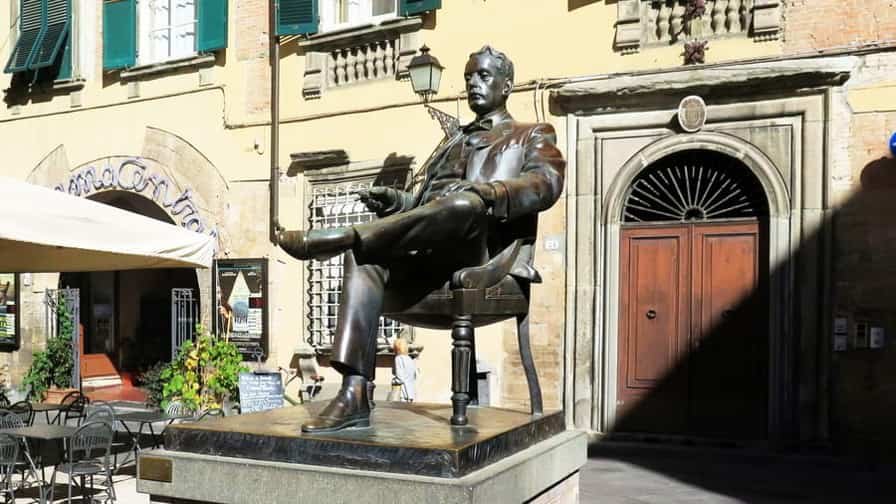
Piazza Cittadella in Lucca is a charming square that embodies the intimate and historical character of this Tuscan city. Nestled within the medieval walls of Lucca’s historic centre, the square is best known for its strong association with music and culture, particularly as the birthplace of Giacomo Puccini, one of Italy’s greatest opera composers. Today, Piazza Cittadella stands as a place where history, daily life, and artistic memory come together, making it a must-visit for anyone exploring the city. The square takes its name from the nearby “Cittadella,” a fortified section of Lucca’s defences that once played a key role in the town’s military history. Over time, this area developed into a residential and cultural quarter, with Piazza Cittadella at its heart. Its modest size and quiet charm reflect the scale and character of Lucca itself, a city known for preserving its medieval atmosphere while welcoming visitors from around the world.
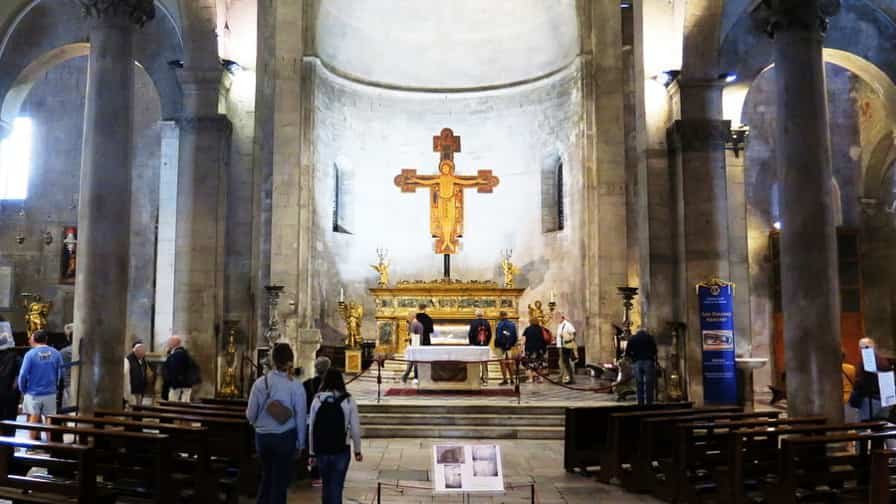
The Chiesa di San Michele in Foro in Lucca is one of the city’s most striking and symbolic landmarks, a masterpiece of Romanesque architecture that dominates the heart of the historic centre. Built on the site of the ancient Roman forum, the church carries both religious and civic significance, serving as a reminder of Lucca’s long history and its cultural vitality. Its imposing façade, rich sculptural details, and towering presence make it a focal point for visitors and an enduring emblem of the city’s identity. The origins of San Michele in Foro date back to the eighth century, though the present structure was largely rebuilt in the eleventh and twelfth centuries. Its location is significant, as it was constructed directly over the forum of the Roman city, the political and social heart of ancient Lucca.
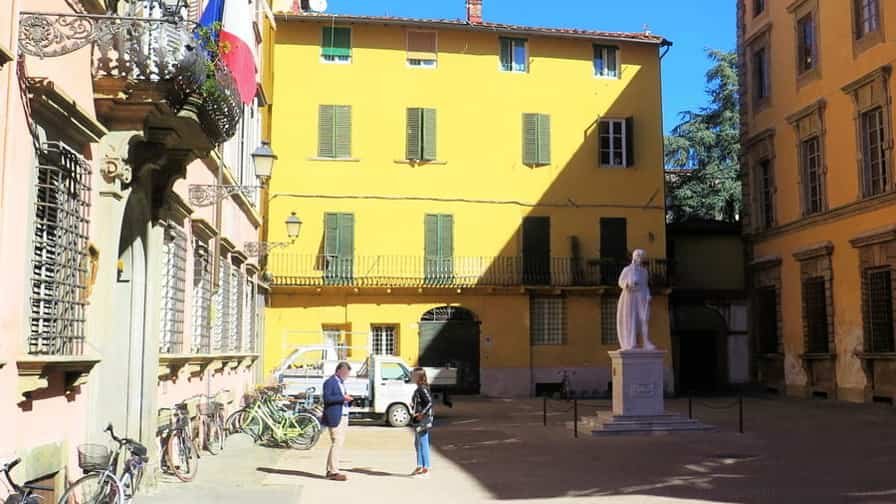
Piazza Guidiccioni in Lucca is a quiet yet historically significant square that reflects the elegance and heritage of this Tuscan city. Unlike the larger and more bustling piazzas that serve as civic and social hubs, Piazza Guidiccioni has a more intimate character, shaped by the presence of noble residences and cultural landmarks. Its calm atmosphere makes it a place where history can be contemplated at a slower pace, offering visitors an authentic glimpse into the city’s aristocratic past. The square takes its name from the Guidiccioni family, one of Lucca’s most prominent noble lineages, whose influence spanned politics, culture, and religion. Their residence, the Palazzo Guidiccioni, dominates the piazza and stands as one of the key examples of Renaissance architecture in the city.
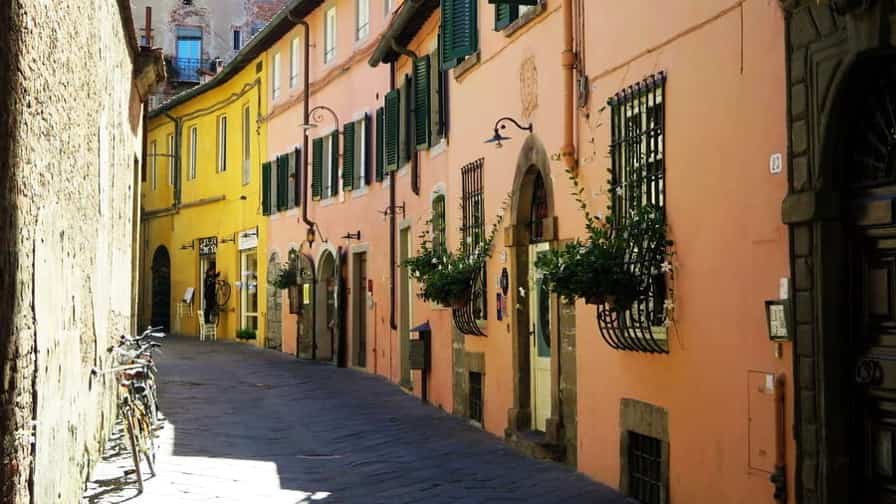
Via degli Angeli in Lucca is a street that carries with it centuries of history, echoing the layered past of this Tuscan city. Nestled within the boundaries of Lucca’s well-preserved Renaissance walls, the street reflects the intimate character of the historic center, where narrow lanes, noble palaces, and religious buildings coexist in a harmonious urban fabric. Walking along Via degli Angeli means stepping back into a world where medieval and Renaissance influences meet, offering both locals and visitors a chance to experience the city’s enduring charm. The name of the street, translated as “Street of the Angels,” immediately evokes a sense of spirituality and mystery. This connection is not accidental, as Lucca has long been a city where religion and art intertwine with everyday life.
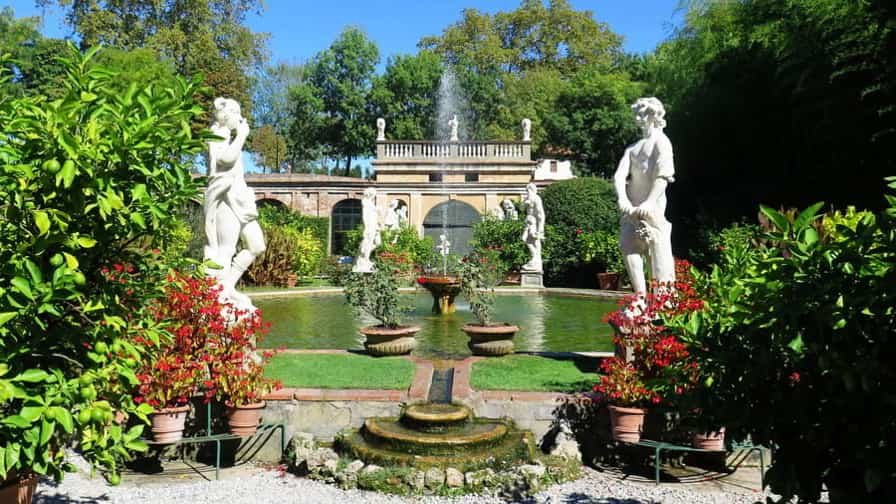
Palazzo Pfanner in Lucca is one of the city’s most elegant and fascinating landmarks, a historic residence that combines architectural refinement with a beautiful baroque garden. Located near the northern section of Lucca’s Renaissance walls, the palace has long attracted the admiration of visitors for its harmonious blend of art, history, and nature. It is a place where the grandeur of the seventeenth century can still be felt, offering a glimpse into the lifestyle of Lucca’s noble families as well as the cultural influences that shaped the city. The palace was originally built in 1660 by the Moriconi family, wealthy merchants who commissioned its construction as a symbol of their prestige. However, their fortunes declined, and the property passed to the Controni family, who expanded and embellished it.
Photo Gallery of Walk 1 – Via del Crocifisso to Chiesa di San Michele in Foro, Piazza San Michele
Approximately 1.17 km – 0.73 miles
The walk starts from the large carpark adjacent to Via del Crocifisso – Piazzale Boccherini – Piazzale Giuseppe Verdi – Via Vittorio Emanuele II – Via del Crocifisso – Via San Paolino – Chiesa dei Santi Paolino e Donato, Via San Paolino – Via San Paolino – Piazza Cittadella – Via San Paolino – Chiesa di San Michele in Foro, Piazza San Michele
Photo Gallery of Walk 2 – Via Roma to Piazzale Boccherini
Approximately 2.61 km – 1.62 miles
The walk starts in Via Roma – Via Fillungo – Via Sant’Andrea – Piazza Guidiccioni – Walk back to Via Fillungo – Via Degli Angeli – Via Cesare Battisti – Piazza del Collegio – Piazza S. Frediano Walk back to Piazza del Collegio – Palazzo Pfanner – Rampa S. Frediano – Viale delle Mura Urbane – Via Discesa Sant’Agostino – Via del Panificio -Piazza Sant’Agostino – Via S. Giorgio – Via delle Conce – Via S. Tommaso – Via Galli Tassi – Via San Paolino – Piazzale Giuseppe Verdi – Piazzale Boccherini
COPYRIGHT © 2018-2025 ITALY IN PHOTOS - ALL RIGHTS RESERVED
